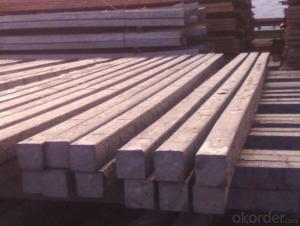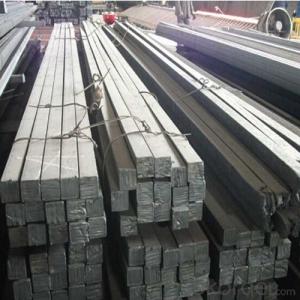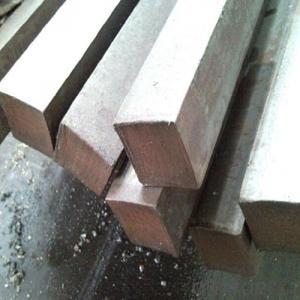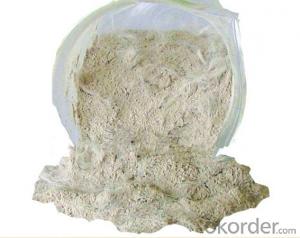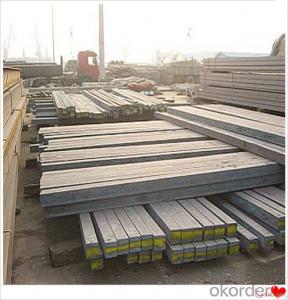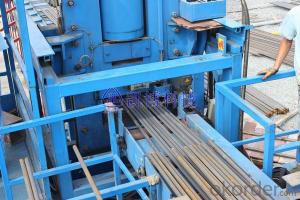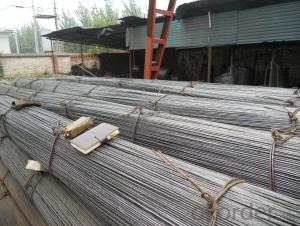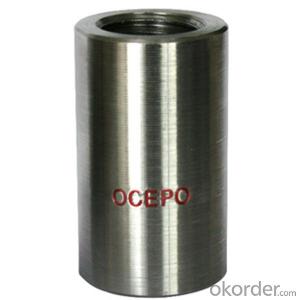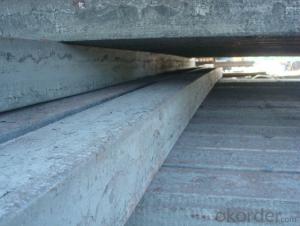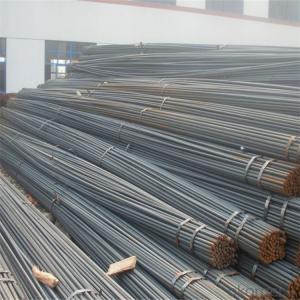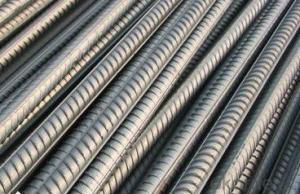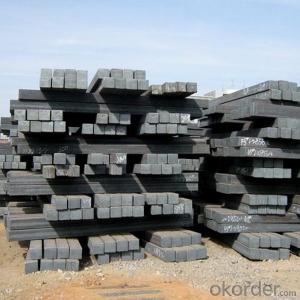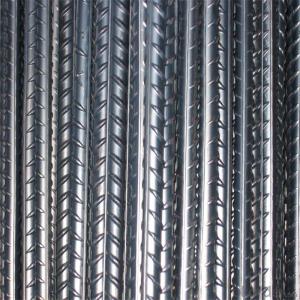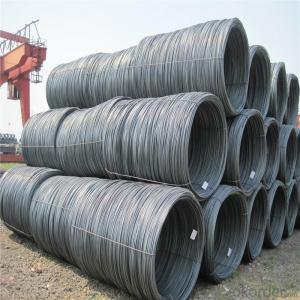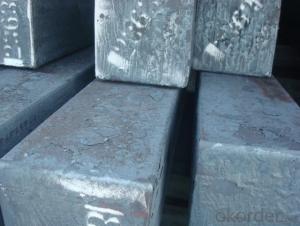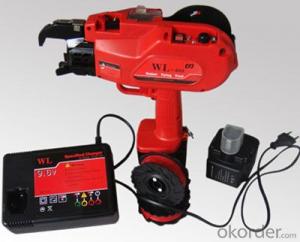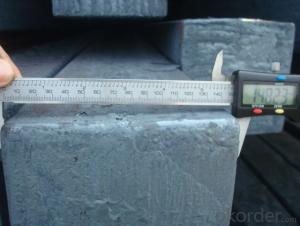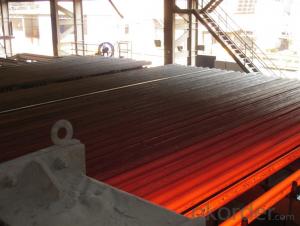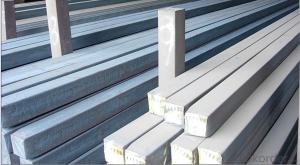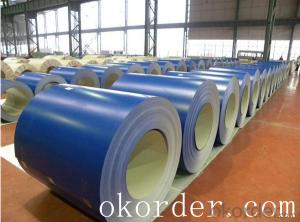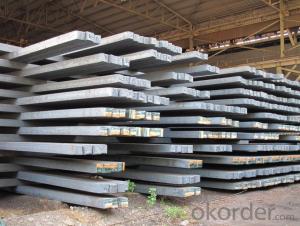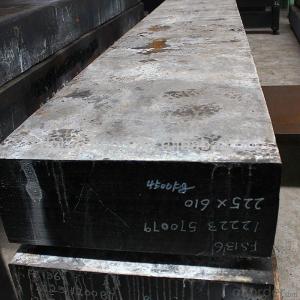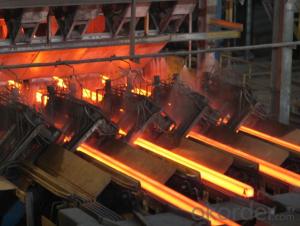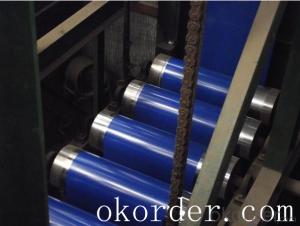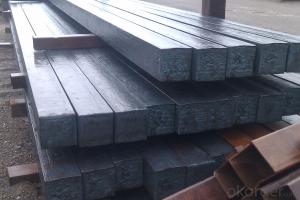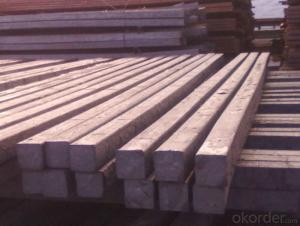Billet Rebar
Billet Rebar Related Searches
Billet RebarHot Searches
12Mm Mdf PriceBillet Rebar Supplier & Manufacturer from China
Okorder.com is a professional Billet Rebar supplier & manufacturer, offers integrated one-stop services including real-time quoting and online cargo tracking. We are funded by CNBM Group, a Fortune 500 enterprise and the largest Billet Rebar firm in China.Hot Products
FAQ
- Steel billets are used in the production of aerospace components as they serve as the starting material for the manufacturing process. Steel billets are essentially semi-finished steel forms that are hot-rolled or forged into specific shapes and sizes. In the aerospace industry, steel billets are typically used to produce critical components such as landing gear, engine components, structural parts, and fasteners. These billets are chosen for their superior strength, durability, and resistance to high temperatures and corrosive environments, which are crucial properties required for aerospace applications. The production of aerospace components using steel billets involves several steps. First, the billets are heated to a high temperature to make them malleable and easy to work with. They are then subjected to various forming processes such as forging, extrusion, or rolling, which shape them into the desired form. These processes allow for precise shaping and dimensional accuracy, ensuring that the components meet the required specifications and tolerances. After the initial shaping, the aerospace components are subjected to further processes such as heat treatment, machining, and surface finishing to enhance their mechanical properties and improve their surface quality. Heat treatment processes such as quenching and tempering are used to strengthen the steel and improve its hardness, toughness, and resistance to wear and fatigue. Machining processes are then employed to achieve the final shape, size, and surface finish of the components. Once the components are manufactured, they undergo rigorous quality control procedures to ensure they meet the stringent standards and regulations of the aerospace industry. This includes thorough inspections, non-destructive testing, and material analysis to verify their integrity, performance, and safety. In summary, steel billets are essential in the production of aerospace components as they provide a reliable and strong starting material. The versatility and excellent mechanical properties of steel make it a preferred choice in the aerospace industry, where reliability and safety are of utmost importance.
- Steel billets, which are semi-finished metal products, are commonly recycled or reused in various ways. One common method of recycling steel billets is through the process of electric arc furnace (EAF) steelmaking. In this method, the billets are melted down in an electric arc furnace and then used to produce new steel products. This process not only allows for the efficient use of resources but also helps in reducing greenhouse gas emissions and energy consumption compared to primary steel production. Steel billets can also be reused in various industries such as construction, automotive, and manufacturing. They can be reshaped and reformed to create new steel products or used as raw material for forging, rolling, or extrusion processes. By reusing steel billets, the industry can reduce the demand for newly manufactured steel and conserve natural resources. Additionally, steel billets can be recycled through a process called continuous casting. In this process, the molten steel is poured into a continuous casting machine, which produces a solid billet. These billets can be further processed into various steel products such as bars, rods, or wire through hot rolling or cold rolling processes. Furthermore, steel billets can be melted and recast into other forms through the process of remelting. This can be done using technologies like induction melting or vacuum arc remelting, which help in purifying the steel and obtaining desired chemical and mechanical properties. Remelting allows for the production of high-quality steel billets that can be used in specialized applications such as aerospace, defense, or medical industries. In conclusion, steel billets are recycled or reused through various processes such as electric arc furnace steelmaking, continuous casting, remelting, and reshaping. These methods not only contribute to the sustainability of the steel industry but also help in conserving resources, reducing emissions, and meeting the growing demand for steel products.
- The main factors affecting the corrosion resistance of alloy steel billets are the composition of the alloy, the presence of impurities, the surface treatment, and the environmental conditions in which the billets are exposed to.
- Shafts are manufactured using steel billets, which are essential components. These billets are semi-finished steel products that typically have a square or rectangular shape. They are created by pouring molten steel into molds and allowing it to solidify. When it comes to shaft manufacturing, steel billets act as the starting material. They are heated to a specific temperature to increase their malleability and ease of handling. Once heated, the billets undergo various processes like forging, rolling, or extrusion. Forging involves shaping the heated billet using a hammer or press to apply compressive forces. This process enhances the grain structure of the steel, improving its strength and minimizing internal defects. On the other hand, rolling involves passing the billet through a series of rollers to gradually shape it into the desired form. It is commonly used for producing long, cylindrical shafts. Extrusion is another technique employed in shaft manufacturing. Here, the heated billet is forced through a die under high pressure, resulting in a shaft with a specific cross-sectional shape. This method is particularly useful for creating shafts with intricate details or complex geometries. After the initial shaping process, the shafts undergo further steps like machining, heat treatment, and finishing. Machining involves removing excess material and creating specific features such as keyways or threads. Heat treatment is used to enhance the shaft's strength, hardness, and durability. In conclusion, steel billets are the raw materials used in the production of shafts. Through processes like forging, rolling, or extrusion, the billets are transformed into the desired shape, size, and properties of the shafts. This ensures that the resulting shafts are strong, reliable, and suitable for their intended applications in industries like automotive, aerospace, and machinery.
- The price of steel billets can be affected by several factors. 1. Raw material costs have a significant impact on the price of steel billets. Fluctuations in the cost of iron ore, coal, and other raw materials used in steel production directly influence the price of steel billets. 2. The supply and demand dynamics of steel billets play a crucial role in determining their price. An increase in demand for steel products, such as construction materials or automotive parts, can drive up the price of steel billets. Conversely, an oversupply can lead to a decrease in price. 3. Energy costs required for steel production can impact the price of steel billets. Fluctuations in energy prices affect the overall production cost and, subsequently, the price of steel billets. 4. Currency exchange rates can have a significant impact on the price of steel billets. If the currency of the country producing steel billets weakens against other currencies, it can make the product more affordable and potentially increase demand. 5. Government regulations, trade policies, and tariffs imposed on steel billets can influence their price. Tariffs can increase the cost of imported steel billets, making domestically produced steel billets relatively more competitive and potentially leading to higher prices. 6. The overall state of the economy, both locally and globally, can impact the price of steel billets. During periods of economic growth, there is typically higher demand for steel products, which can drive up the price. Conversely, during economic downturns, demand may decrease, resulting in lower prices. 7. Technological advancements in steel production can impact the price of steel billets. Innovations that increase efficiency and reduce production costs can potentially lead to lower prices, while new technologies that improve the quality or properties of steel billets may command a higher price. It is important to note that these factors are interconnected and can influence each other. Therefore, understanding the complex relationship between these factors is essential in analyzing and predicting the price of steel billets.
- The cost of steel billets can vary depending on factors such as market conditions, demand, and the specific type and quality of the billets. It is recommended to consult with a steel supplier or check current market prices for accurate and up-to-date information on the cost of steel billets.
- Continuous casting is a common method used to produce steel billets. This process includes several steps that involve the gathering and processing of raw materials, the transformation of these materials into molten pig iron, and the refining of the molten pig iron in either a basic oxygen furnace or an electric arc furnace. In these refining furnaces, impurities are eliminated and alloying elements may be added to achieve specific properties. Once the molten steel is chemically balanced and refined, it is ready for casting. To do this, the steel is poured into a water-cooled copper mold known as a continuous caster. As it flows into the mold, the steel solidifies and takes the shape of a long rectangular or square billet. During the casting process, water is circulated through the mold to cool the steel quickly and aid in solidification. This controlled cooling ensures that the billet has a consistent structure and the desired mechanical properties. After solidification, the billet is cut into predetermined lengths using a torch or a shear. These billets can vary in size and weight depending on their intended use. Once cut, the billets can undergo further processing through rolling, forging, or other shaping methods to create various steel products such as bars, rods, tubes, or structural shapes. In summary, the production of a steel billet involves the transformation of raw materials into molten steel, the refining of the molten steel, and the casting of it into a solid shape using continuous casting. These billets then serve as the starting point for the production of a wide range of steel products used in various industries.
- The main safety precautions in handling steel billets include wearing appropriate personal protective equipment (PPE) such as gloves, safety glasses, and steel-toed boots to protect against potential injuries. It is important to use proper lifting techniques and equipment to prevent strains and back injuries. Additionally, ensuring a clean and organized work area helps to reduce the risk of slips, trips, and falls. Regular inspection and maintenance of equipment, as well as proper training and supervision, are crucial to maintaining a safe working environment when handling steel billets.


